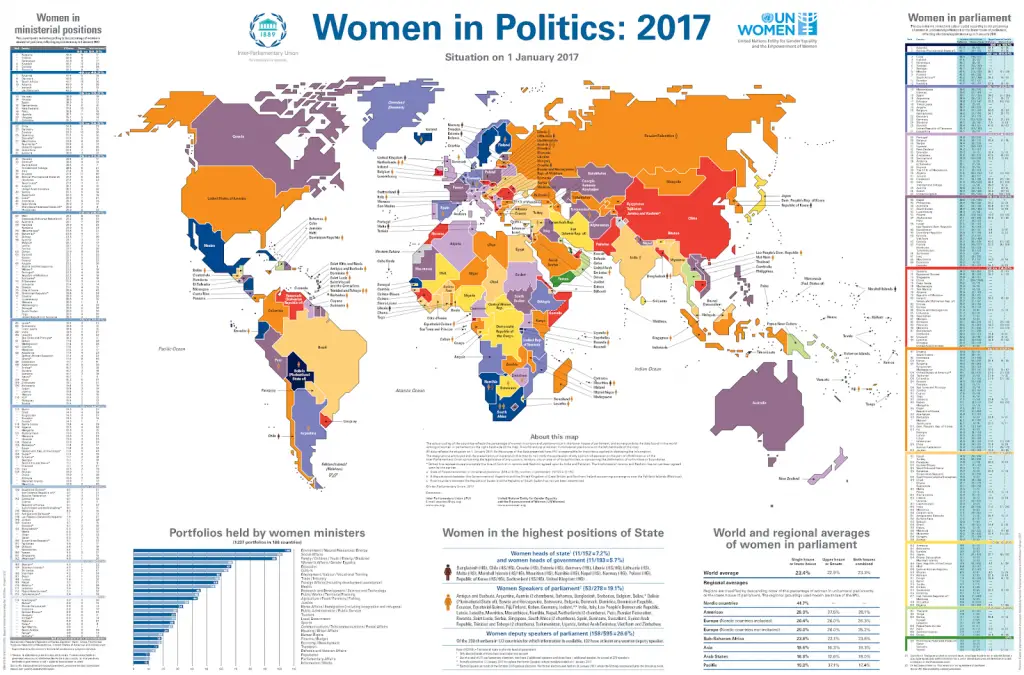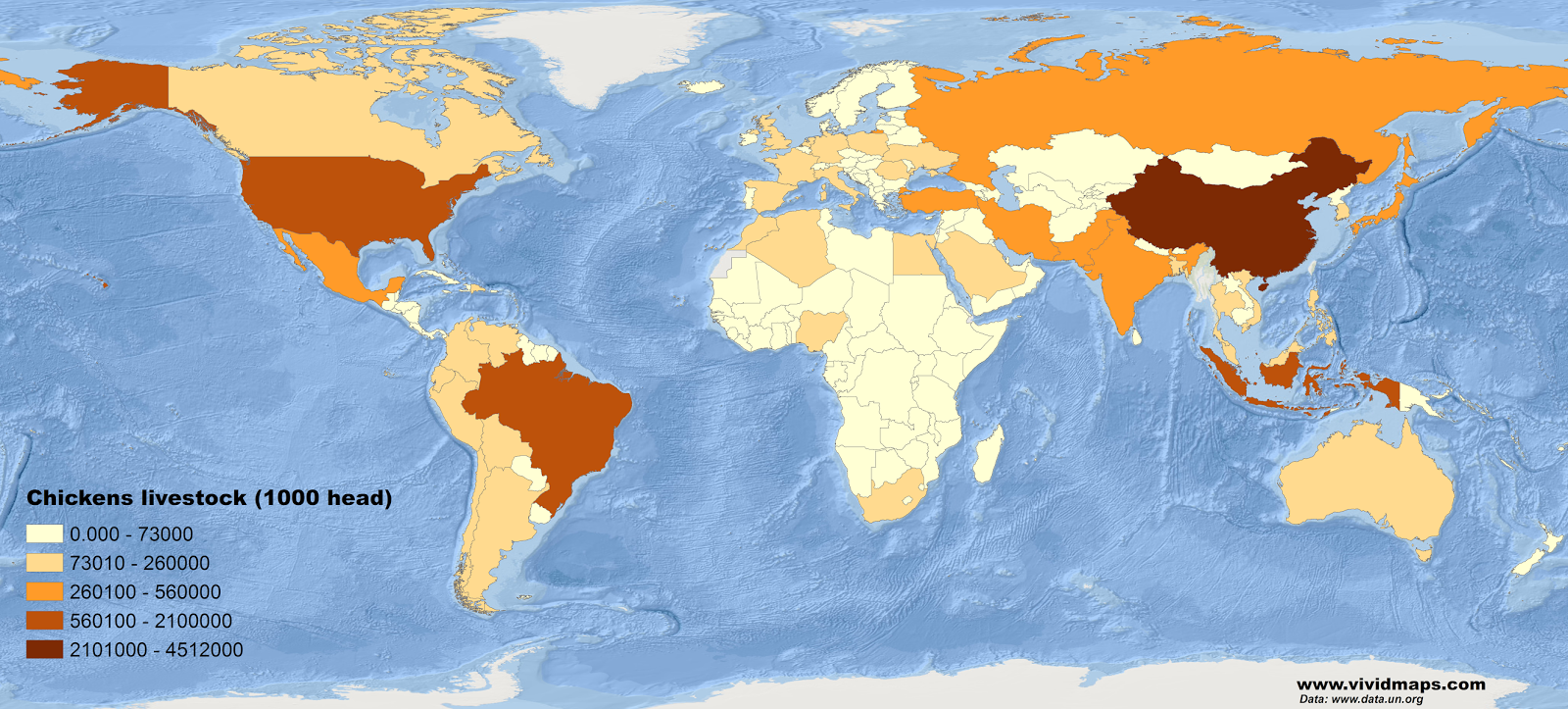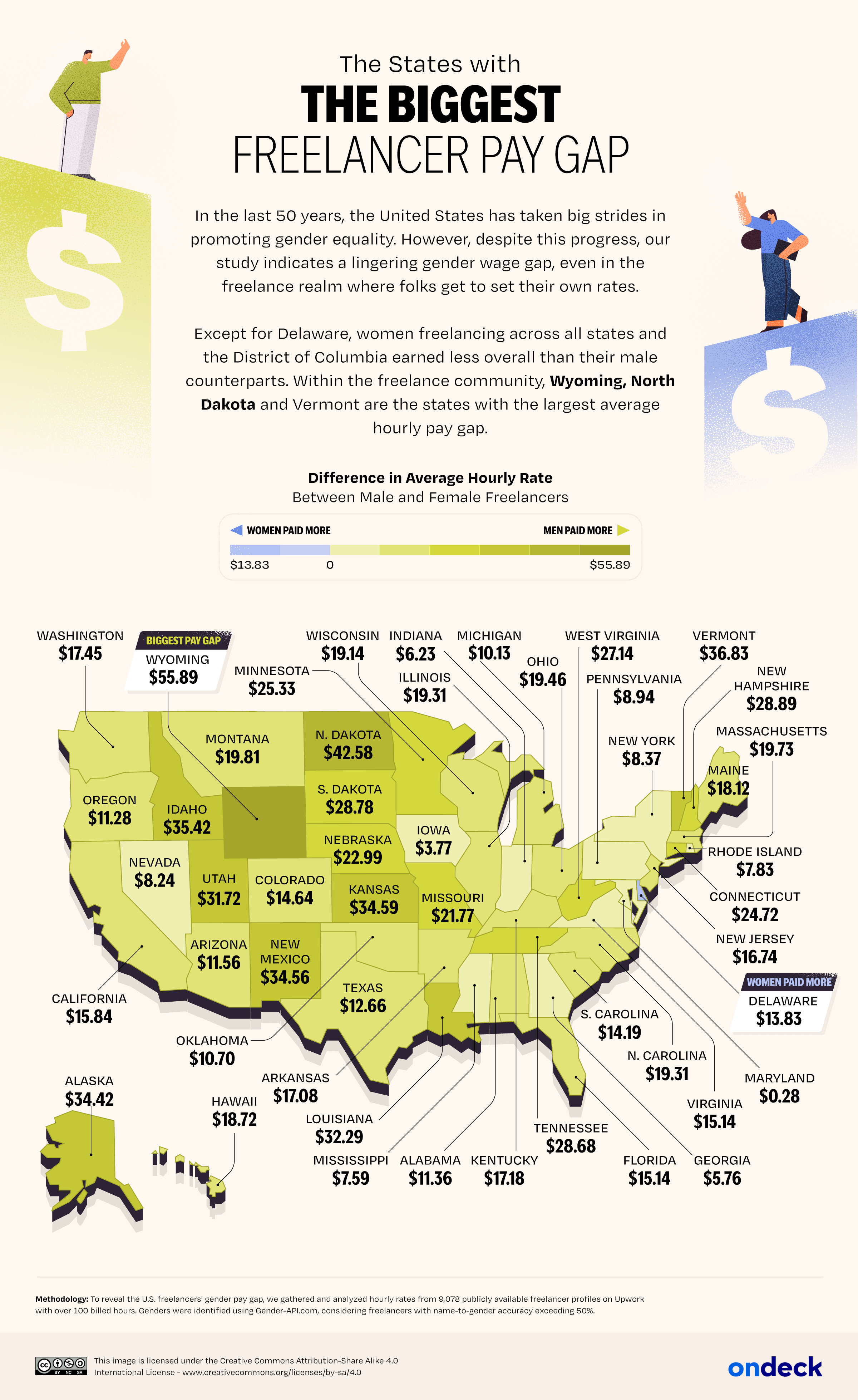Women in politics (2017)
The color coding of the countries reflects the percentage of women in unicameral parliaments or in the lower house of parliament and corresponds to the data found in the world
ranking of women in parliament on the right-hand side of the map. A world ranking of women in ministerial positions is on the left-hand side of the map.
All data reflects the situation on 1 January 2017. As the source of the data presented here, IPU is responsible for the criteria applied in displaying the information.
The designations employed and the presentation of material on this map do not imply the expression of any opinion whatsoever on the part of UN Women or of the
The Inter-Parliamentary Union concerning the legal status of any country, territory, city or area or of its authorities, or concerning the delimitation of its frontiers or boundaries.
Women in the highest positions of State
Women heads of state (11/152=7.2%) and women heads of government (11/193=5.7%): Bangladesh (HG), Chile (HS/HG), Croatia (HS), Estonia (HS), Germany (HG), Liberia (HS/HG), Lithuania (HS), Malta (HS), Marshall Islands (HS/HG), Mauritius (HS), Namibia (HG), Nepal (HS), Norway (HG), Poland (HG), Republic of Korea (HS/HG), Switzerland (HS/HG), United Kingdom (HG).
Women Speakers of parliament (53/278=19.1%): Antigua and Barbuda, Argentina, Austria (2 chambers), Bahamas, Bangladesh, Barbados, Belgium, Belize, Bolivia (Plurinational State of), Bosnia and Herzegovina, Botswana, Bulgaria, Denmark, Dominica, Dominican Republic, Ecuador, Equatorial Guinea, Fiji, Finland, Gabon, Germany, Iceland, India, Italy, Lao People’s Democratic Republic, Latvia, Lesotho, Mauritius, Mozambique, Namibia, Nepal, Netherlands (2 chambers), Peru, Russian Federation, Rwanda, Saint Lucia, Serbia, Singapore, South Africa (2 chambers), Spain, Suriname, Swaziland, Syrian Arab Republic, Trinidad and Tobago (2 chambers), Turkmenistan, Uganda, United Arab Emirates, Viet Nam and Zimbabwe.
Women deputy speakers of parliament (158/595=26.6%): Of the 230 chambers in 172 countries for which information is available, 102 have at least one woman deputy speaker.
Portfolios held by women ministers (1237 portfolios in 186 countries):
1. Environment / Natural Resources / Energy – 108
2. Social Affairs – 102
3. Family / Children / Youth / Elderly / Disabled – 98
4. Women’s Affairs / Gender Equality – 68
5. Education – 67
6. Culture – 65
7. Employment / Labour / Vocational Training – 60
8. Trade / Industry – 59
9. Foreign Affairs (including development assistance) – 58
10. Health – 56
11. Research and Development / Science and Technology – 46
12. Public Works / Territorial Planning – 45
13. Agriculture / Food / Forestry / Fishing – 44
14. Justice – 38
15. Home Affairs / Immigration (including integration and refugees) – 34
16. Public Administration / Public Service – 30
17. Tourism – 29
18. Local Government – 29
19. Sports – 28
20. Communications / Telecommunications / Postal Affairs – 27
21. Housing / Urban Affairs – 24
22. Human Rights – 20
23. Finance / Budget – 19
24. Economy / Development – 19
25. Transport – 17
26. Defence and Veteran Affairs – 15
27. Population – 11
28. Parliamentary Affairs – 11
29. Information / Media – 10
World and regional averages of women in parliament
Nordic countries – 41.7%
Americas – 28.3%
Europe (Nordic countries included) – 26.4%
Europe (Nordic countries not included) – 25%
Sub-Saharan Africa – 23.8%
Asia – 19.6%
Arab States – 18.9%
Pacific – 15%
Source: unwomen.org









